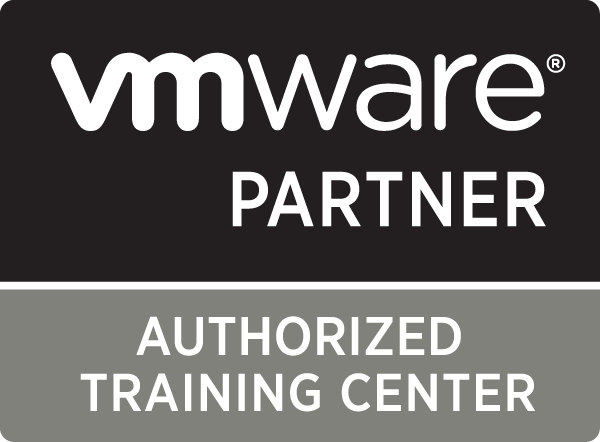Informationstechnologien & IT-Sicherheit
VMware vRealize Operations: Install, Configure, Manage (V6.6).
- Seminar
- Präsenz
- Zurzeit keine Termine
- 40 Unterrichtseinheiten
- Teilnahmebescheinigung
Seminarnummer: 26755
In diesem fünftägige Kurs, der für erfahrene VMware vSphere-Benutzer entwickelt wurde, erfahren Sie, wie Sie VMware vRealize Operations als Tool effizient verwenden können.
Nutzen
By the end of the course, you should be able to meet the following objectives:
- Navigate the vRealize Operations user interface
- Use alerts and analysis badges to troubleshoot common and complex vSphere operational issues
- Monitor capacity risk and infrastructure utilization
- Perform capacity planning and what-if analyses
- Use workload placement to rebalance workloads
- Configure policies to meet the operational needs of the environment
- Customize vRealize Operations by creating alert definitions, symptom definitions, views, reports, dashboards, and super metrics
- Give users and user groups controlled access to the environment
- Monitor operating systems and applications
- Extend capabilities of vRealize Operations by adding management packs and solutions
- Scale a vRealize Operations deployment and make it highly available
- Install and configure vRealize Operations
- Monitor and maintain a vRealize Operations deployment
Zielgruppe
Experienced system administrators and system integrators, and consultants responsible for customizing vRealize Operations content
Anforderungen
This class requires completion of one of the following courses:
- VMware vSphere: Install, Configure, Manage [V6.5]
- VMware vSphere: Optimize and Scale [V6.5]
Inhalte
1. Course Introduction
- Introductions and course logistics
- Course objectives
- Describe how vRealize Operations is used to manage the software-defined data center
- Describe the features and benefits of vRealize Operations
- Navigate the main areas of the user interface
- Explain the importance of inventory trees
- View widgets and dashboards on the Home page
- View inventory trees and objects on the Environment page
- Use views to gather information about the environment
- Create reports about the environment
- Explain how data is collected and analyzed by vRealize Operations
- List the functions of the analytics component
- Discuss key indicators in the user interface that provide warnings about potential issues
- Use alerts to identify root causes for performance, capacity, and utilization issues
- Use symptoms to indicate a potential issue
- Use badges to visually analyze your environment to identify good or bad conditions for the entire environment
- Discuss the process for troubleshooting system health issues
- Troubleshoot system health alerts
- Troubleshoot a user's performance issue
- Use health weather maps and heat maps to monitor system health
- Define capacity planning terminology
- Discuss capacity planning models
- Monitor for capacity risk in the environment
- Troubleshoot risk issues
- Troubleshoot efficiency issues
- Identify ways to optimize resource use
- Use projects to perform what-if scenarios
- Use tags and applications to group objects
- Create custom object groups in the environment
- List guidelines for customizing vRealize Operations
- Import and export content
- Create policies for various types of workloads
- Explain how policy inheritance works
- Identify scenarios that use intelligent workload placement
- Use intelligent workload placement to rebalance workloads across the environment
- Use policies to drive workload balance plan recommendations
- Create symptom definitions
- Create recommendations and use actions
- Create actions
- Create notifications
- Create alert definitions
- Build and use custom views in your environment
- Create custom dashboards
- Configure widgets
- Configure widget interactions
- Configure the Scoreboard widget to use a metric configuration file
- Configure dashboard navigation
- Specify the dashboard used on the Summary tab of an object
- Organize dashboards in folders
- Share dashboards
- Create super metrics
- Enable super metrics in policies
- Explain how users are authorized to access objects
- Explain how privileges are prioritized when a user has multiple privileges
- Create local users and user groups
- Import users and user groups from an LDAP source
- Deploy operating system and application monitoring
- Monitor operating systems and applications
- Explore the management packs that are available for your environment
- Install and configure a management pack
- Describe the function of the components in a node
- Describe the roles in a vRealize Operations cluster
- Explain how a node's components interact to achieve scalability and availability
- Install a vRealize Operations cluster
- Configure a vRealize Operations cluster
- Monitor the health of a vRealize Operations cluster
- Generate a support bundle
- View logs
- Perform cluster management tasks
Hinweise
Der Kurs kann mit 41 VMware PSO Credits gezahlt werden.
Produktausrichtung:
Produktausrichtung:
- vRealize Operations 6.6
- ESXi 6.5
- vCenter Server 6.5


